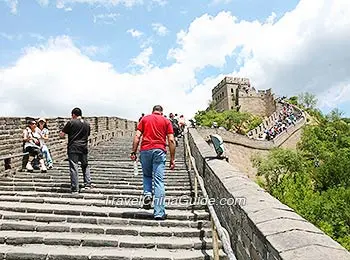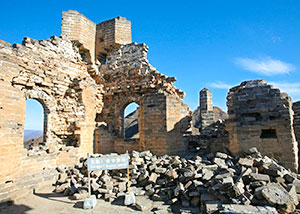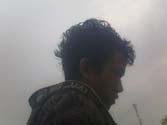Great wall of China
The Great Wall of China, one of the greatest wonders of the world, was enlisted in the World Heritage by UNESCO in 1987. Just like a gigantic dragon, the Great Wall winds up and down across deserts, grasslands, mountains and plateaus, stretching approximately 6,700 kilometers (4,163 miles) from east to west of China. With a history of more than 2000 years, some of the sections of the great wall are now in ruins or even entirely disappeared. However, it is still one of the most appealing attractions all around the world owing to its architectural grandeur and historical significance.
History: Excitement abounds in the origin, vicissitude and nature of the great wall of the Qin, Han, and Ming dynasties.
The Great Wall was originally built in the Spring, Autumn, and Warring States Periods as a defensive fortification by the three states: Yan, Zhao and Qin. The Great Wall went through constant extensions and repairs in later dynasties. In fact, it began as independent walls for different states when it was first built, and did not become the "Great" wall until the Qin Dynasty. Emperor Qin Shihuang succeeded in his effort to have the walls joined together to fend off the invasions from the Huns in the north after the unification of China. Since then, the Great Wall has served as a monument of the Chinese nation throughout history. A visit to the Great Wall is like a tour through the history backwards; it brings tourists great excitement in each step of the wall.
Construction: The mystery of the construction of the wall is amazing. The construction of the Great Wall, drew heavily on the local resources for construction materials, was carried out in line with the local conditions under the management of contract and responsibility system. A great army of manpower, composed of soldiers, prisoners, and local people, built the wall. The construction result demonstrates the manifestation of the wisdom and tenacity of the Chinese people. Sections: Ready to show you an incredible diversity of scenery and ethnic people along its way.
Sections: Ready to show you an incredible diversity of scenery and ethnic people along its way.
The Great Wall as we see today was mostly built during the Ming Dynasty. It starts from Shanhaiguan Pass in the east to Jiayuguan Pass in the west traversing provinces of Liaoning, Hebei, Beijing, Tianjin, Shanxi, Inner Mongolia, Ningxia, Shaanxi and Gansu.
Protection: The China Great Wall Academy has called for greater protection of this important relic.
Culture: Unfolding a consid
 erable part of Chinese culture beyond the wall.The Great Wall has long been incorporated into Chinese mythology and popular symbolism.
erable part of Chinese culture beyond the wall.The Great Wall has long been incorporated into Chinese mythology and popular symbolism.The most beautiful of several legends is about the collapse of a section of the Great Wall caused by Meng Jiangnu, who cried bitterly over the death of her husband in the construction of the Great Wall. This legend has been spread widely through textbooks, folk songs and traditional operas. It is well-known in China.
Travel of the wall: Make a trip to at least one section of the Great Wall should be a must for your China Trip. Elaborate tour plans make travel comfortable, memorable, enjoyable and informative. See details of our Memorable Highlights Tours.
If you prefer to see the wall in a relatively natural state, visit Simatai, 110km north-east of Beijing. This part of the Wall is the best choice, for it is still in its original state without being developed into a popular tourist attraction due to its distance and little public transportation options.





 Durango is located in the
Durango is located in the 



